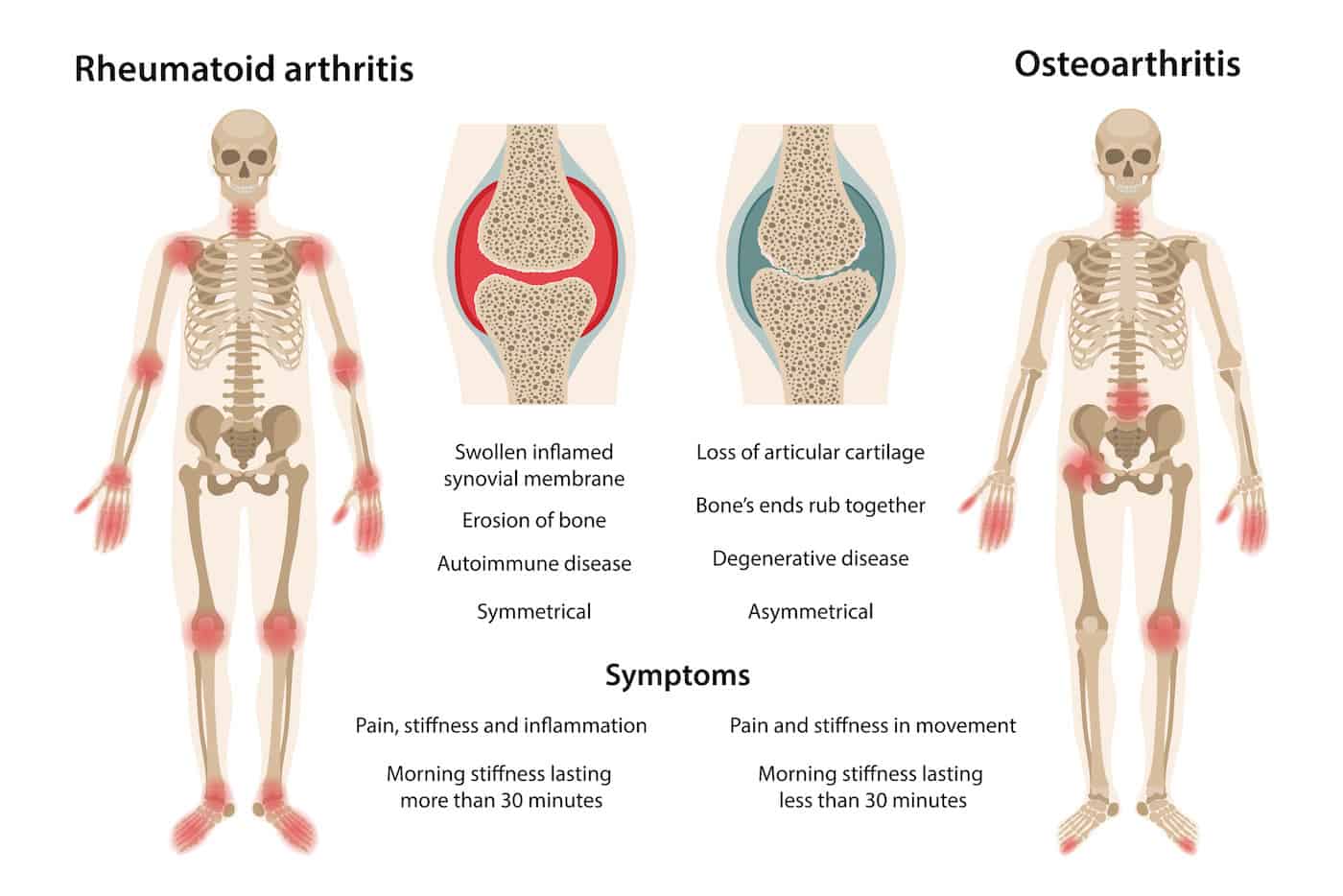Arthritis is often the diagnosis given to anyone over the age of 50 with joint pain that appears mechanical in nature.
And while it is possible that arthritis is causing your joint pain, it’s also possible that it’s something else entirely.
Let’s dive into this article to learn what arthritis is and what the typical symptoms are so you can better understand if your pain truly is secondary to arthritis.
What is arthritis?
Arthritis, otherwise known as osteoarthritis, is a condition indicating you have decreased joint space secondary to increased bony growth and degradation of cartilage in the space between your joints.
Arthritis can occur at any joint in the human body, but is most commonly found in knees, shoulders, hips, fingers, and along your spine.
What are the symptoms of arthritis?
Symptoms of arthritis can vary immensely from person to person. Most people will describe an ache near or surrounding the joint that is aggravated with movement.
Another common symptom of arthritis is pain that is worse in the morning, but eases up as you begin to move throughout your day.
What causes arthritis?
Arthritis is a natural part of the aging process as our joints do wear down with our day-to-day wear and tear. But the extent of the arthritis will depend in part on your mechanics and medical history.
If you have had an injury to a joint, this places you more at risk for developing arthritis in this joint as the injury typically damages the cartilage.
Also, we now understand that it is not necessarily the fact that your bones are rubbing together that causes the pain, but rather the inflammation that occurs in the joint as a result of the dysfunctional mechanics.
This is why arthritis will typically respond well to anti-inflammatory based interventions.
Arthritis is also in part genetic, so if you have family members with arthritis your odds of developing it are higher.
Potential Diagnoses
Arthritis is often a diagnosis given on its own. However, the following are examples of arthritis that occurs in different areas of the body and has a special diagnosis:
- Degenerative disc disease (arthritis in your spine)
- Stenosis (arthritis in your spine)
- Subacromial compression (arthritis in your shoulder)
- CAM or Pincer (arthritis in hip)
Did you know?
Did you know that just because you have arthritis that doesn’t necessarily mean you will have pain?
Recent studies using MRI images have revealed that a high percentage of the population over 50 years old has arthritis, but not all of these individuals reported pain.
This means that just because you develop arthritis in a joint that doesn’t mean you will have pain in the joint. And if you focus on anti-inflammatory measures in the form of diet and exercise you can effectively stave off arthritic-related pain.

